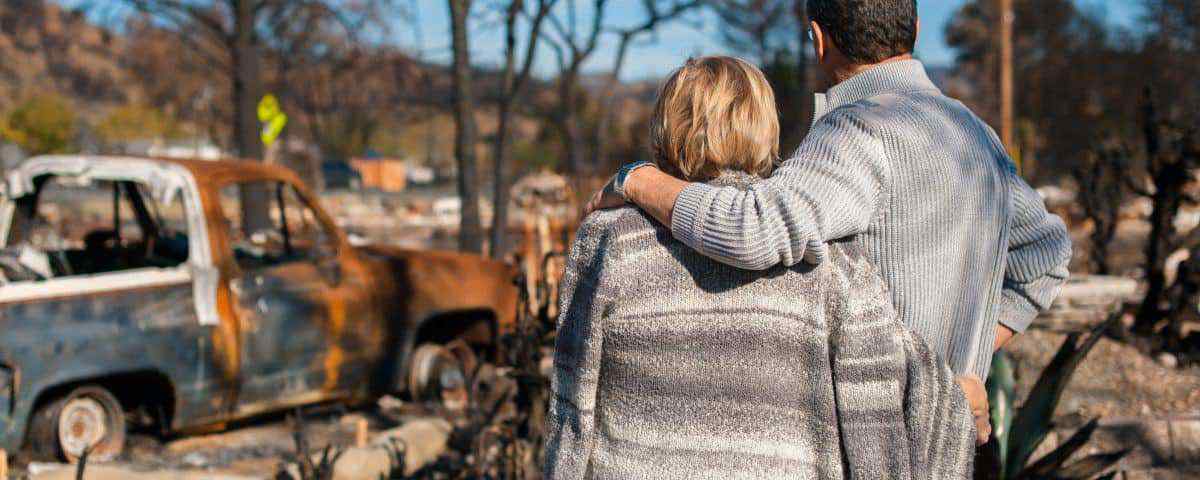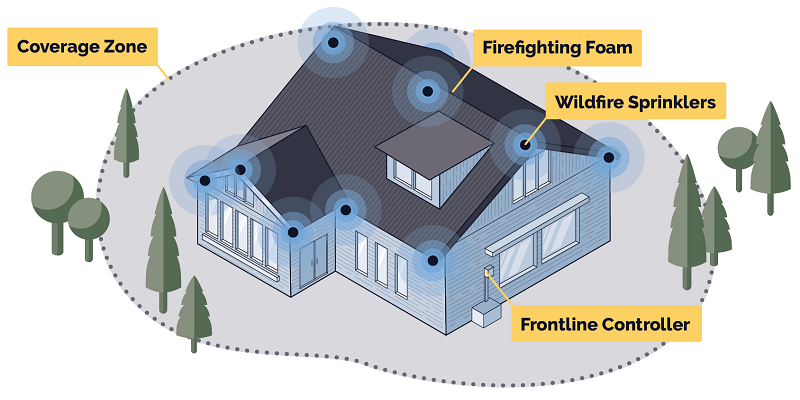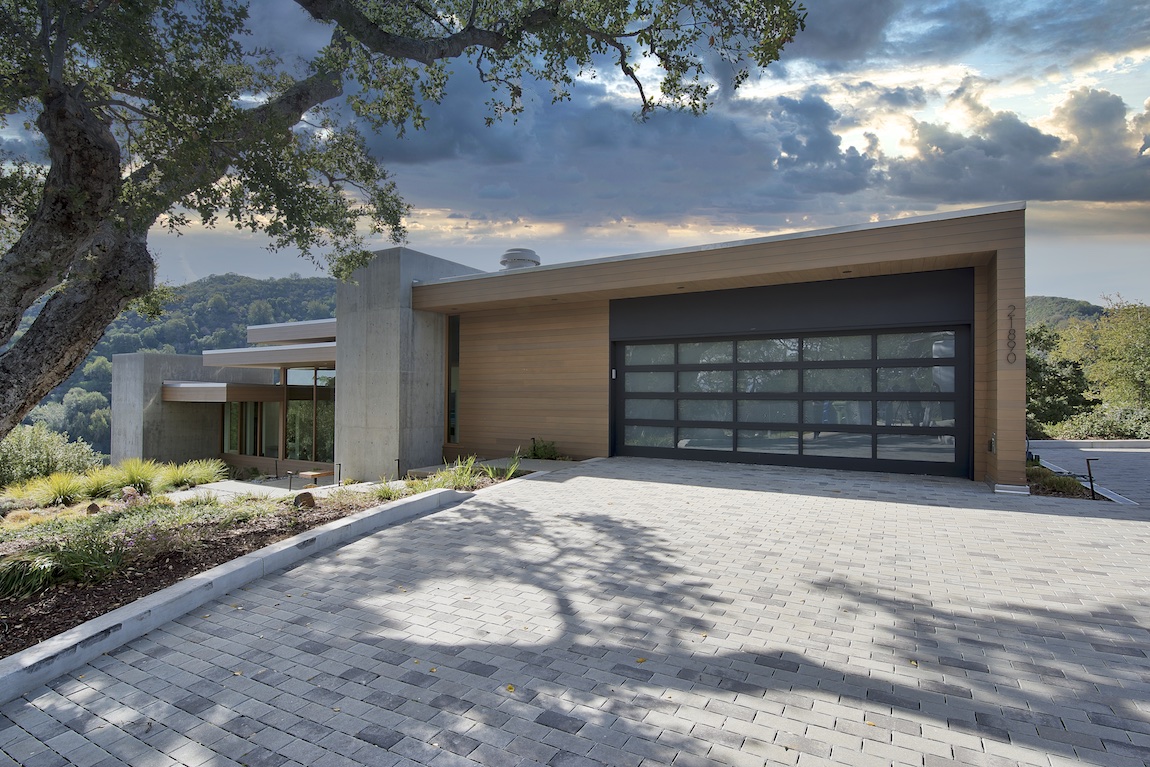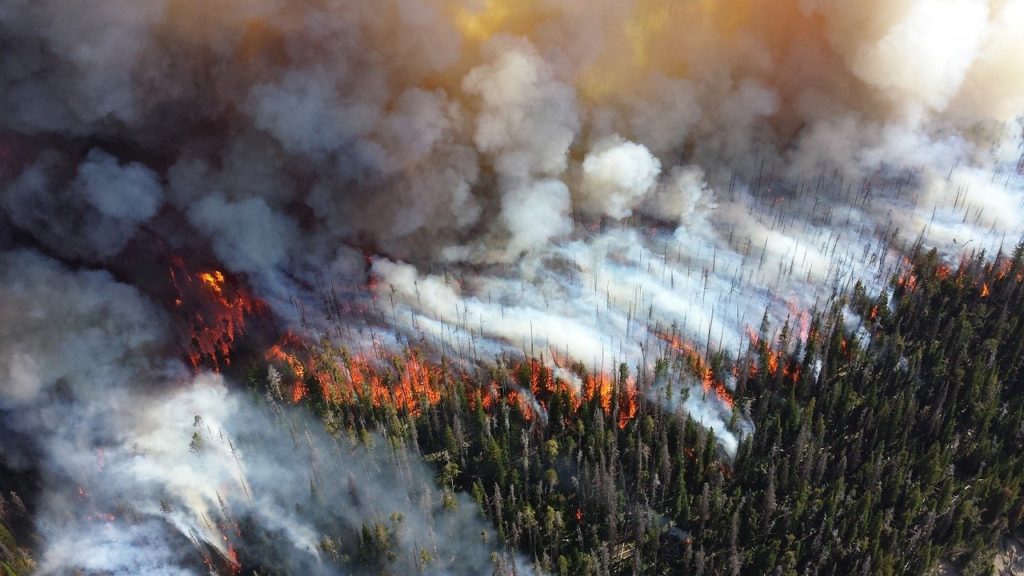
Wildfires can be incredibly destructive. When they force you to evacuate your home, it’s important to know what to do after you return. There are still dangers present even after a wildfire has passed. As such, homeowners should know what dangers to look for and how to proceed with cleaning up the destruction left behind by the fire.
While you might already have taken steps to protect your home from wildfires and establish an effective evacuation plan, many homeowners aren’t prepared to deal with the aftermath. Here’s everything you should know about what to do after a wildfire.
Protect your home from wildfire by installing a Frontline Wildfire Defense exterior sprinkler system. For more information, contact us today for a free consultation.
What to Do When You Return Home After a Wildfire
Returning home after a wildfire can be difficult. You may not know whether or not it is completely safe, how much damage has been caused, or what to do if your home has suffered extensive damage.
To ensure you are able to clean up the damage and restore your home without putting yourself or your family in danger, here are a few important steps to follow:
Check with Officials
First and foremost, you should not return home until local officials have stated that it is safe to do so. The same officials that ordered the evacuation order will indicate when it is safe for homeowners to return. Only then should you consider returning home and beginning your clean-up efforts.
Exercise Caution
Even after the wildfire has passed and officials have confirmed that it is safe to return, there still may be dangers present that you should be aware of.
There may still be hot spots on the ground that can burn you or your pets and can flare up and cause more fires without warning. To avoid these hot spots, stay away from any smoldering debris, live embers, burned trees and vegetation, and hot ashes. Be sure to also stay away from any downed power lines or wires, and report any electrical damage to authorities as quickly as possible as these are potential fire hazards.
Before entering your home, you should also inspect any trees surrounding your home. Trees damaged by the wildfire may be unstable and could potentially fall over, causing damage to your home. Check tree trunks for burns and burnt roots, as these are signs that the tree is not stable.
Inspect Home for Damage
If you see that your home has suffered any damage at all, the first thing to do is contact your utilities provider to make sure your gas and electricity are turned off before entering. Check for gas leaks. If you smell any gas, you and your family should evacuate the home immediately and contact your gas company.
You should also be sure to check for unstable walls, damaged utilities (water heater, septic tank, etc.), wild animals, and sharp objects. Before sifting through any debris, be sure to put on a mask and spray the area with water to avoid breathing in dust particles.
Check Property for Embers
After inspecting your home’s surrounding landscape and determining that it is safe to enter, you should also inspect the interior and exterior of your home for sparks and embers. This includes you’re your lawn, garden beds, roof, attic, and all interior rooms. Wind can carry embers into your home through windows and even your vents. Do not assume that no embers made it into your home just because your windows and doors were shut. Be sure to extinguish any embers that you find.
Begin Cleaning
When cleaning your property, it’s important to take precautions to ensure your safety and reduce your risk of being exposed to hazardous materials and conditions. Be sure to:
- Wear protective glasses and a dust particulate mask
- Wear long pants and a long-sleeved shirt to completely cover your limbs
- Wear leather gloves or work gloves
- Wear boots or other protective footwear that can’t be easily punctured or melted
- Drink water to avoid dehydration
The Red Cross suggests that homeowners should throw out any food, drinks, and medications that may have been exposed to fire, smoke, or debris. You should get rid of any damaged items and dangerous debris. When disposing of hazardous materials, be sure to check with your local waste management department to determine the best way to do so.
Make sure to carefully document all the damage with photos, videos, and a written inventory. This will help you back up your insurance claims to ensure you are adequately compensated for your losses.
If any parts of your home need to be rebuilt, consider using fire-resistant building materials like fire-rated glass, concrete, and brick to help harden your home against future wildfires.
Protect Your Home from Wildfire

The days following a wildfire can be very stressful, but by taking precautions and knowing what steps to take to begin repairing your home, you can help ensure your and your family’s safety and begin restoring your property.
The Frontline Wildfire Defense exterior sprinkler system can protect your home from wildfire with:
- Remote activation for 24/7 protection from anywhere
- Built-in battery backup and satellite communication
- Environmentally friendly, biodegradable Class A foam
- Municipal, well, pool, and emergency water tank supply options
- Wildfire tracking and remote system activation using the Frontline app
For more information on how Frontline Wildfire Defense can help safeguard your home, contact us today for a free consultation.


